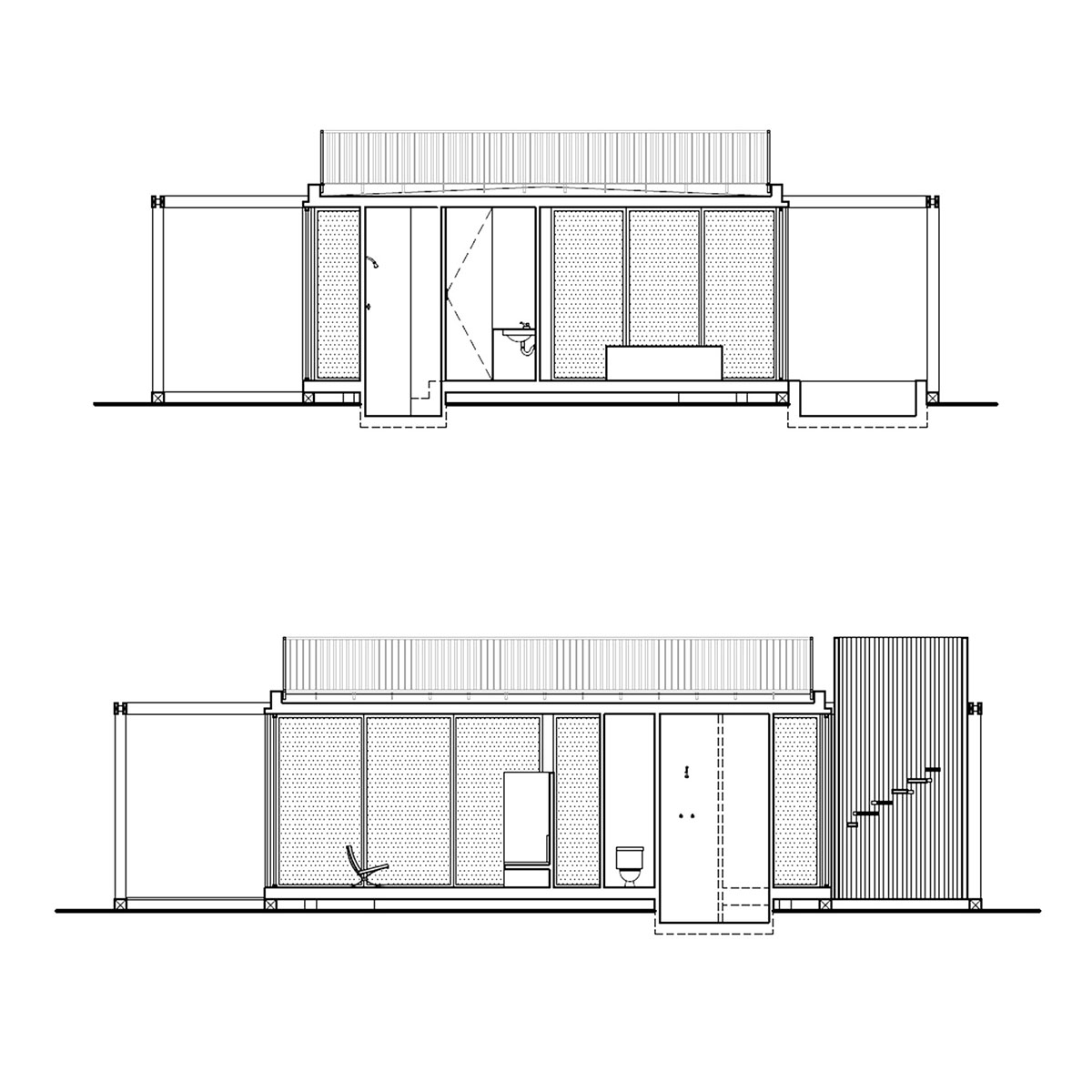Submitted by WA Contents
Concrete columns and beams wrap Cosmos House designed by S-AR in Mexico
Mexico Architecture News - Mar 29, 2021 - 14:01 11332 views

Concrete columns and beams have wrapped this house to create a brutal finish and ensure the durability of the house situated within a seismic area in Mexico.
Designed by Mexican architecture practice S-AR, the 100-square-metre house is located on a flat setting nearby Puerto Escondido on the Pacific coast of the state of Oaxaca, Mexico.
Drawn with a perfect squared floor plan, the plan is based on a grid of columns and beams of 20cm x 20cm placed to form interior spaces of 4.10m x 4.80m and exterior ones of 2.60m x 2.60m, 2.60m x 4.10m and 2.60m x 4.80 m.

Named Cosmos House, the house shelters the habitable space under the roof, including one bedroom, kitchen-dinning room, living and bathroom.
In design process, the architects paid much attention about the features and the use of the site since the project site is located within a seismic area.

"One of the main design ideas of the house is the use of the structure in a reticular form that could respond to its situation within a seismic area," said S-AR.

"This way it would answer after telluric movements coming from any direction. In the same way, the selection of materials provide rigidity, durability and low maintenance to the house."
"The use of wood makes the space feel warmth, and adds temporality as it will change over time. Seen this way, the house is a process of transformation related to the site, its vegetation, seasons, constellations, and surrounding nature," added the studio.

The house is simply composed of three main elements. The first element is a center or hard nucleus, built with concrete walls, slabs and columns with a brutal finish.
The second element is its external grid made of concrete beams and columns with a smooth finish. They are connected to the central nucleus which allows the extension of activities of the whole house to the exterior.

Generating patios, terraces, perimetral circulation and a pond. This modifies the perception of the real dimension by the experience of inhabiting the house.
The third element is the roof that functions as a lookout towards the landscape. It holds a water mirror for reading the stars, constellations and the cosmos that surround users at night.

"The house has a strong relation with the landscape through a skin of a mechanical wooden lattice, which also protects the house when not in use and will provide different levels of privacy when inhabited," added the architects.

As the architects highlight, the outer concrete grid embraces and incorporates the existing vegetation, making the points between architecture and landscape undefined and transformed by the seasons, blooming and uses that the inhabitants will give to the structure.

For material choice, the architects used local materials to provide low maintenance, durability and the rational understanding in its use, which is one of the basis of the design.
The architects basically used two materials to build the house, one of them is concrete, as the studio emphasizes, this constructive system is highly used by Mexican architecture that provides structural resistance for the seismic zone, high durability, economy and low maintenance.

The second material is wood - made from the endemic tree macuil. According to the studio, wood material offers flexibility on the enclosures, human scale, and the relationship of the house with its immediate surroundings - not only through the views but also through temperature, sound and wind.

"All the water derived for the usage of the house is filtered by a cistern of sand and stones," the firm continued.
"The use of natural soaps and shampoos are promoted in aim to keep the water free of pollution. During rain season the water from the roof is captured and redirected by a single waterfall."
"The idea is to store it and use it for the growing of the gardens in the outer perimeter of the house," the firm added.

The architects added that "as a house designed for a remote place far away from the city, the use of existing local resources was of great importance."
"Not only the material resources, but the human ones. The human creativity was a constant during the building process of the house. The entire construction team was formed by local operators."

The architects further emphasized that "they were trained through constant constructive trials of the different uses of concrete." "Structure, walls, floors and other finishes were made this way."

The woodwork was made by local artisans who developed the mechanical opening and movement of the wooden doors and shutters. This contributes to the growth of the local crafting and enriches architecture itself. The final result comes from the collaboration between local labour and architects.

Ground floor plan

Plan

Plan

Plan

Section and elevation

Sections





Project facts
Project: Casa Cosmos
Architecture: S-AR
Location: Puerto Escondido, Oaxaca, Mexico.
Architects in charge: César Guerrero, Ana Cecilia Garza
Collaborators: María Sevilla, Carlos Morales, Luis Fernando De la Garza.
Programme: Single family house.
Client: Private.
Construction area: 100 sqm.
Project year: 2018
Construction year: 2019
Builder / General Contractor: José Ramírez
Structural Engineer: CM Ingeniería
Civl Engineer: Fermín Pérez
Carpentry: Ubaldo Ríos
Blacksmith: Mario Ramírez
Interior Design: S-AR, Aránzazu de Ariño, Claudio Sodi
Landscape Design: S-AR, Aránzazu de Ariño, Claudio Sodi
Supervision: Patricio Sodi, Claudio Sodi, Aránzazu de Ariño, S-AR.
All images © Camila Cossío, Claudio Sodi.
> via S-AR
